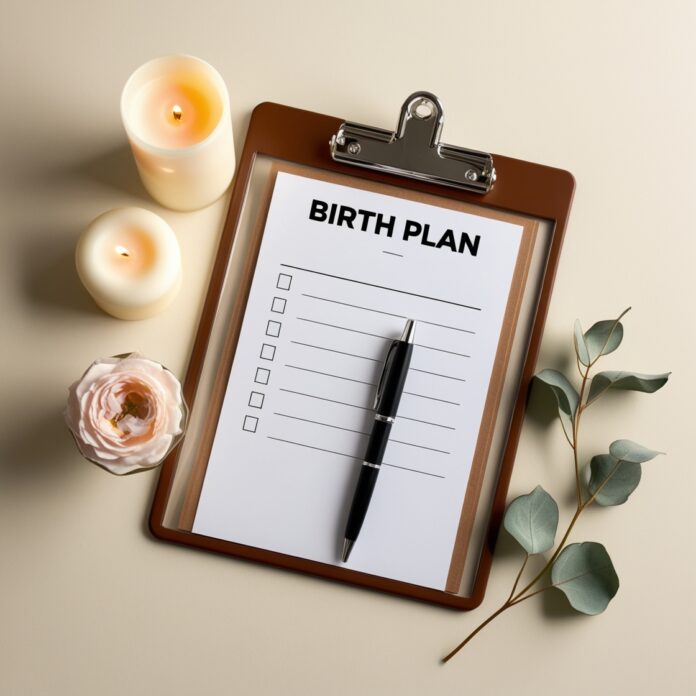Bringing a new life into the world is an extraordinary journey, and having a well-thought-of birth plan can really help one feel more in control of the big day. A birth plan is a document that details your wishes concerning labor, delivery, and postpartum care, thereby ensuring your healthcare provider is on the same page as you. This guide will help in crafting this perfect birth plan that suits your unique needs and expectations.
1. What is a Birth Plan?
A birth plan is a written document that communicates your preferences during labor and delivery to your medical team. Though it’s very important to be flexible, it provides them with an idea of what you would like your experience to be, even when things don’t exactly go as planned.
Why Create a Birth Plan?
- Clarity: Ensures everyone involved understands your desires.
- Confidence: Helps you feel empowered and prepared.
- Coordination: Allows health practitioners to provide services catering to your needs.
Whether you prefer a natural delivery or want to employ medical pain relief, a birth plan serves as a guide to navigate the unpredictable journey of delivery.

2. Key Things to Go into Your Birth Plan
1. General Information
Start off with just basics:
- Your full name and contact information.
- Due date and healthcare provider’s contact information.
- Any medical conditions or allergies.
This ensures everyone involved has quick access to vital information.
2. Environment Preferences
Set the tone for your birthing environment:
- Do you prefer dim lighting or natural light?
- Would you like music, silence, or specific calming sounds?
- Are you comfortable with photographs or videos being taken during the process?
Creating a serene atmosphere can significantly impact your labor experience.
3. Labor Preferences
Labor is a highly personal experience, so include:
- Pain Management Options: Please state if you want an epidural, nitrous oxide, or non-medical pain management options such as breathing.positions
- Labor Positions: Please state if you would wish to walk around, use a birthing ball, or have availability to a shower or tub.
- Hydration and Nutrition: Please inform the team if you need to eat light snacks or drink clear fluids.
4. Delivery Preferences
At delivery, your preferences may include the following:
- Birthing Positions: Standing, squatting, or lying down.
- Assistance Tools: Please state whether you want the use of forceps, vacuum, or episiotomy if required.
- Umbilical Cord: Delayed cord clamping or immediate cutting.
5. Care After the Birth
Your birth plan can also detail your intentions for care after the delivery has taken place:
- Skin-to-Skin Contact: Lying next to your baby immediately following birth.
- Newborn Feeding: Breastfeeding, bottle-feeding, or a combination of both.
- Newborn Procedures: Consent to vaccination, vitamin K shot, or delaying the bath.

3. How to Write the Perfect Birth Plan
1. Know Your Stuff
Take some time to learn about different birth options, including water births and hospital births, for example. Understand their pros and cons. Go to your childbirth education classes, speak with your healthcare provider, and learn about your hospital or birthing center’s policies.
2. State Your Preferences
While all the details may be important to you, prioritize those aspects that are most important to you. Don’t set up a plan that is inflexible or exhaustive but really focus on your must-haves.
3. Use Clear, Concise Language
Write your birth plan in simple, easy-to-read language. Use bullet points and headings to make it accessible for your medical team.
4. Involve Your Partner or Support Person
Discuss your birth plan with your partner, doula, or family members who will be present during delivery. Their understanding of your preferences ensures they can advocate for you.
5. Remain Flexible
Be open-minded when you approach your strategy because childbirth is unpredictable. Be prepared for changes to ensure your safety and your baby’s wellbeing.

4. Common Mistakes to Avoid
1. Focusing Solely on the Ideal
While it’s natural to envision the ideal birth, don’t be in denial about complications. Consider adding contingency plans for situations such as emergency C-sections.
2. Making It Too Long
A birth plan that’s many pages can become overpowering to your medical team. Keep it to a page or two, focusing on your most valued preferences.
3. Not Considering the Postpartum Period
Many parents forget to include their postpartum care preferences such as feeding plans or including time with the baby in the room. Make sure your plan continues beyond delivery.
5. Sample Birth Plan Template
Preferences for Environment:
- Dimmed lighting
- Soft instrumental music playing
Labor Preferences:
- Ability to move freely around
- Epidural, if needed
Delivery Preferences:
- Delayed cord clamping
- Place baby on chest immediately after delivery
Postpartum Care:
- Breastfeeding exclusively
- Vitamin K shot for baby
This format is easily shared among your medical team.
6. What Happens if Things Don’t Go as Planned?
Labor and delivery are times of trial, even with the finest preparation. If your plan cannot be carried out because of some medical emergency, just focus on what matters the most: seeing your baby arrive safely. Trust your medical team to make those adaptations while still taking your wishes into consideration.
Writing a birth plan is a proactive step toward becoming confident and prepared for childbirth. It allows you to state your preferences while communicating well with your medical team. Remember, flexibility is as important as preparation. Both together will get you through labor and delivery gracefully and confidently.



